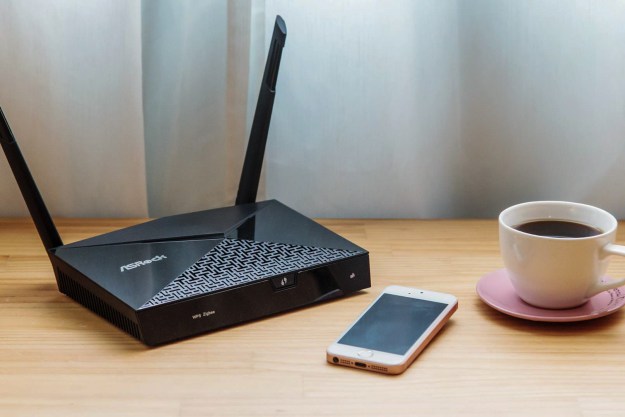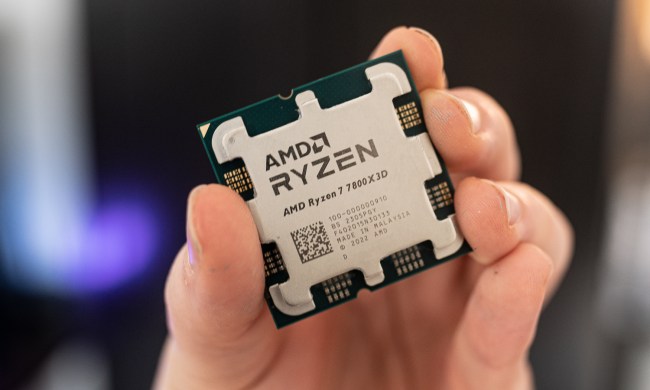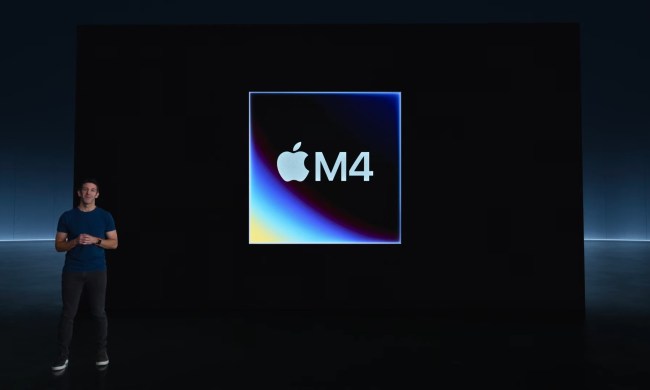
“ASRock isn't the first name you think of for home networking and the X10 IoT Router proves why.”
- Home networking and smart home control in a box.
- Budget price.
- Reasonable suite of features.
- Patchy connectivity and broken smart home device control.
- Dated hardware and UI design.
- Low quality build with sharp edges and corners.
- Mixed networking performance
Smart home convergence is ready for primetime and heading your way, fast. If your router is buried under a mess of proprietary smart home hubs, then relief is on hand. New chipsets, packing multiple radios, are hitting the market, equipping everyday devices with smart home controllers.
You have heard about Amazon Echo Plus, the new smart speaker and personal assistant which also packs a smart home hub for controlling lights, thermostats, garage doors and more. Available later this month, Samsung SmartThings Link is a dinky dongle for the NVIDIA Shield that endows the console with full smart home control and, of course, the company recently pushed out its Samsung Connect Home router/smart home controller combo.
In the next twelve months, expect to see other networking manufacturers produce similar routers with integrated smart home features. Motherboard specialist ASRock may not be the first name that springs to mind when considering a networking kit, but the company’s X10 IoT Router is one of the first of this new breed of smarter routers to arrive.
Budget networking with smart home savvy
Priced at just $139.99, the X10 is a compact, traditional-looking router that lacks the mesh-networking capability of Samsung’s new model, but it’s a bargain for a basic router with an integrated smart home controller. Alongside dual-band, AC1300 Wi-Fi (offering speeds up to 400 Mbps at 2.4 GHz and 867 Mbps at 5 GHz) the router sports an integrated Zigbee radio that can control a range of devices. They include smart LED bulbs from Philips Hue, GE and Sengled, various smart plugs and outlets, leak or door sensors, and more (check out the full list of compatible devices on the ASRock website).

As a bonus, the X10 also includes Infrared (IR) support, allowing you to remotely control heating, air-conditioning, TVs, and other devices using a free smartphone app. You’ll need line of sight between the device and the X10, but if you ever wanted to use a router as a giant universal remote, here’s your chance.
Dated design cues and disappointing build quality
While the latest whole-home Wi-Fi systems have revolutionized router design, with cute and compact hubs, the ASRock X10 is grittily old-school. Fixed, external antennas provide a 1970’s TV aesthetic, while cheap plastics, sharp edges and pointy corners are a world away from the premium finishes and gentle curves of devices like Google WiFi and NETGEAR Orbi. This isn’t a device that you’ll want to show off at home, but it could make a handy (and somewhat lethal) weapon in case of a break-in.
Connectivity includes four Gigabit Ethernet ports, a Gigabit WAN port, plus USB 2.0 and USB 3.0 ports for storage sharing.
Robust features let down by patchy app connectivity
While ASRock offers a smartphone app (Android and iOS supported) for router management, you’re steered towards a traditional, browser-hosted setup which doesn’t take too long to complete. Wi-Fi Protected Setup (WPS) allows you to quickly connect a computer by pressing a large button on the front of the device.
At $139.99, the X10 is a bargain for a basic router with integrated smart home controller.
The X10’s management console, much like the router itself, tries hard to look fresh but, compared to modern competitors, comes across like your dad in a pair of skinny jeans. The black and red color scheme adds a splash of energy and, just like your dad’s jeans, everything that needs to be covered is covered, but it’s all a bit 2012.
That said, advanced admins will find more toys to play with, compared to new-fangled, smartphone-controlled devices, with guest networking, Dynamic DNS, OpenVPN support, an integrated media server and basic parental controls. That’s before we get to the headline act – smart home control. The ASRock may not look the prettiest on the dance floor, but it’s got some moves.
Unfortunately, what the X10 doesn’t have is a working mobile app, which kills the smart home proposition stone dead. While I could connect to the router with both Android and iOS devices, the two
But with those connections made, the app repeatedly complained that router was offline and the smart home show ground to a halt. Each time I tried to power on the smart home devices from the app, I received the same error message. Sadly, repeated attempts to reboot the router or re-open the app made little difference.
That’s a shame, as it looks as if ASRock’s developers have put in considerable work to define a decent set of smart features, including the creation of “scenes” that allow you to control multiple devices with one touch, as well as location-based triggers for leaving and arriving home. Overall, it’s a real disappointment, but one that provides a clear message. While hardware mash ups look great on paper, they’re useless without robust, reliable software.
Mixed networking performance
With smart home control a bust, let’s see how the ASRock X10 performs as a basic router. Results from our tests were mixed.
File transfers over the X10’s Ethernet connection raced along, hitting an impressive 941 Mbps average. That’s a significant jump on the speeds achieved by the Samsung Connect Home and our third test device, the AC1300-class Amped Wireless ARTEMIS.
However, wireless transfers were far less impressive. Connecting to the faster, but shorter range 5 GHz network, the ASRock router could only must an average speed of 298 Mbps – fine for desktop work, online gaming and more than a couple of high definition video streams, but well behind the pack.
Hooking up a USB 3.0 storage enclosure housing a 3.5” hard drive allowed us to check out the X10’s storage sharing performance. An average read speed 23.1 MBps is well behind the performance of a dedicated NAS, but is sufficient for light music and video streaming around the home. The 6.5 MBps write speed is more of a concern, however – copying large files to a connected drive will be tedious.
Warranty information
The ASRock X10 IoT Router ships with a one-year limited parts and labor warranty.
Our take
The ASRock X10 IoT Router is a neat idea, mashing home networking and smart home control in a small, compact device. But the execution is weak. Cheap hardware, a dated user interface and so-so performance may be tolerated on a budget device, but the X10’s connectivity bugs are a real reason to pass.
Is there a better alternative?
While Samsung Connect Home and Connect Home Pro could do with more refinement, they’re great-looking devices with faster wireless speeds and support a far wider range of smart home devices than the ASRock X10. And they work.
How long will it last?
With a limited track record in networking hardware and a core focus in other product categories, there’s little insight into how committed ASRock are to resolving bugs or extending the range of supported smart home devices. Proceed with extreme caution.
Should you buy it?
The ASRock IoT Router could have been the smart home surprise of the year. But on this showing, you should pass.







